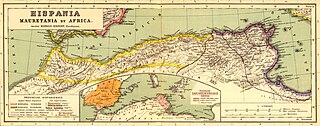
Mauretania is the Latin name for a region in the ancient Maghreb. It stretched from central present-day Algeria westwards to the Atlantic, covering northern present-day Morocco, and southward to the Atlas Mountains. Its native inhabitants, of Berber ancestry, were known to the Romans as the Mauri and the Masaesyli.

Numidia was the ancient kingdom of the Numidians in northwest Africa, initially comprising the territory that now makes up Algeria, but later expanding across what is today known as Tunisia and Libya. The polity was originally divided between the Massylii in the east and the Masaesyli in the west. During the Second Punic War, Masinissa, king of the Massylii, defeated Syphax of the Masaesyli to unify Numidia into the first Berber state in present-day Algeria. The kingdom began as a sovereign state and later alternated between being a Roman province and a Roman client state.
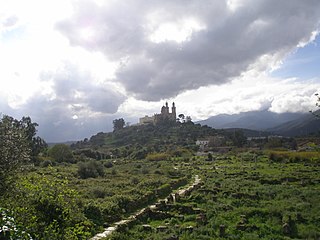
Hippo Regius is the ancient name of the modern city of Annaba, Algeria. It historically served as an important city for the Phoenicians, Berbers, Romans, and Vandals. Hippo was the capital city of the Vandal Kingdom from 435 to 439 AD. until it was shifted to Carthage following the Vandal capture of Carthage (439).

The Battle of Tricamarum took place on December 15, 533 between the armies of the Byzantine Empire, under Belisarius, and the Vandal Kingdom, commanded by King Gelimer, and his brother Tzazon. It followed the Byzantine victory at the Battle of Ad Decimum, and eliminated the power of the Vandals for good, completing the reconquest of North Africa under the Byzantine Emperor Justinian I. The main contemporary source for the battle is Procopius, De Bello Vandalico, which occupies Books III and IV of his magisterial Wars of Justinian.

Oea was an ancient city in present-day Tripoli, Libya. It was founded by the Phoenicians in the 7th century BC and later became a Roman–Berber colony. As part of the Roman Africa Nova province, Oea and surrounding Tripolitania were prosperous. It reached its height in the 2nd and 3rd centuries AD, when the city experienced a golden age under the Severan dynasty in nearby Leptis Magna. The city was conquered by the Rashidun Caliphate with the spread of Islam in the 7th century and came to be known as Tripoli during the 9th century.

The history of North Africa during the period of classical antiquity can be divided roughly into the history of Egypt in the east, the history of ancient Libya in the middle and the history of Numidia and Mauretania in the West.

Africa was a Roman province on the northern coast of the continent of Africa. It was established in 146 BC, following the Roman Republic's conquest of Carthage in the Third Punic War. It roughly comprised the territory of present-day Tunisia, the northeast of Algeria, and the coast of western Libya along the Gulf of Sidra. The territory was originally and still is inhabited by Berbers, known in Latin as the Mauri, indigenous to all of North Africa west of Egypt. In the 9th century BC, Semitic-speaking Phoenicians from West Asia built settlements along the coast of the Mediterranean Sea to facilitate shipping. Carthage, rising to prominence in the 8th century BC, became the predominant of these.
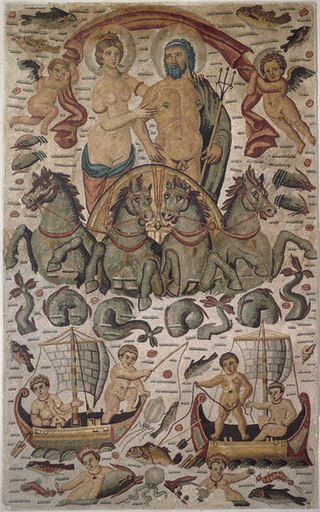
Cirta, also known by various other names in antiquity, was the ancient Berber and Roman settlement which later became Constantine, Algeria.

Thagaste was a Roman-Berber city in present-day Algeria, now called Souk Ahras. The town was the birthplace of Saint Augustine.
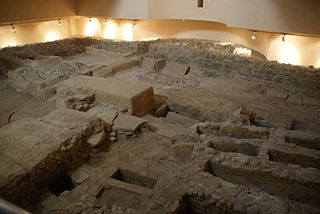
Abyla was the pre-Roman name of Ad Septem Fratres. Ad Septem Fratres, usually shortened to Septem or Septa, was a Roman colony in the province of Mauretania Tingitana and a Byzantine outpost in the exarchate of Africa. Its ruins are located within present-day Ceuta, an autonomous Spanish city in northwest Africa.

Milevum was a Roman–Berber city in the Roman province of Numidia. It was located in present-day Mila in eastern Algeria.

Caesarea in Mauretania was a Roman colony in Roman-Berber North Africa. It was the capital of Mauretania Caesariensis and is now called Cherchell, in modern Algeria. In the present time Caesarea is used as a titular see for Catholic and Eastern Orthodox bishops.

The area of North Africa which has been known as Libya since 1911 was under Roman domination between 146 BC and 672 AD. The Latin name Libya at the time referred to the continent of Africa in general. What is now coastal Libya was known as Tripolitania and Pentapolis, divided between the Africa province in the west, and Crete and Cyrenaica in the east. In 296 AD, the Emperor Diocletian separated the administration of Crete from Cyrenaica and in the latter formed the new provinces of "Upper Libya" and "Lower Libya", using the term Libya as a political state for the first time in history.
For nearly 250 years, Berber kings of the 'House of Masinissa' ruled in Numidia in modern day Algeria, and later in adjacent regions, first as sovereigns allied with Rome and then eventually as Roman clients. This period commenced by the Roman Army, assisted by Berber cavalry led by Masinissa at the Battle of Zama in 202 BC, and it lasted until the year 40 AD, during the reign of the Roman Emperor Gaius, also known as Caligula.

Madauros was a Roman-Berber city and a former diocese of the Catholic Church in the old state of Numidia, in present-day Algeria.

Fossatum Africae is one or more linear defensive structures claimed to extend over 750 km (470 mi) or more in northern Africa constructed during the Roman Empire to defend and control the southern borders of the Empire in Africa. It is considered to be part of the greater frontier system in Roman Africa.

Roman colonies in North Africa are the cities—populated by Roman citizens—created in North Africa by the Roman Empire, mainly in the period between the reigns of Augustus and Trajan.

The Roman Africans or African Romans were the ancient populations of Roman North Africa that had a Romanized culture, some of whom spoke their own variety of Latin as a result. They existed from the Roman conquest until their language gradually faded out after the Arab conquest of North Africa in the Early Middle Ages.

The Limes Mauretaniae was a portion of a 4,000-kilometre (2,500 mi) Roman fortified border (limes) in Africa approximately 100 kilometres (62 mi) south of the modern day Algiers.
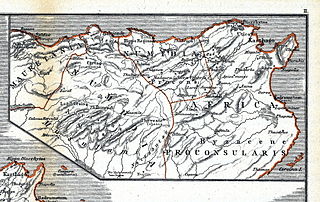
Numidia was a Roman province on the North African coast, comprising roughly the territory of north-east Algeria.




















